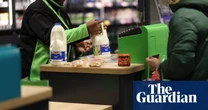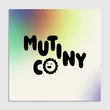What does Kroger’s brand sound like? Until recently, no one knew. And then on June 25, the grocery behemoth (which includes regional chains like King Soopers, Fred Meyer, Ralphs, and Pick’n Save) launched its first-ever sonic identity. There’s a succinct sonic logo (think Netflix’s tudum), a full brand theme song, and more—so as it turns out, this is officially what Kroger sounds like:
It’s an upbeat earworm you’re going to be hearing a lot of in grocery stores, on TV, and everywhere the Kroger family of brands reaches. But it’s no mere jingle, and there’s a surprising amount of strategy and craft behind such an audio signature—and real financial impact as well, notes John Taite, EVP of global brand partnerships and development at Made Music Studio, which created the work.
“People think about what they see, but they feel what they hear,” he says. And it’s apropos, because, well, “there’s always an emotional element to any sort of purchase decision.”
THE SOUND OF ‘KROJIS‘
The work comes at the tail of a five-year brand revamp at Kroger, the largest U.S. supermarket chain by revenue. Its family of brands across the U.S. had essentially operated as independent entities from a marketing perspective, but around 2019–2020, the company decided to begin uniting them in a more intentional way. Tom Duncan, Kroger’s VP, head of marketing, says the initiative began with the launch of the brand’s animated “Kroji” characters (a portmanteau of Kroger and emoji), and continued with the debut of the “fresh cart” logo in 2021, which like the Krojis was rolled out to all Kroger markets and sub-brands. Now, the sonic identity is the latest tool in Kroger’s bid to unify everything under one marketing roof.
“We believe that this makes our advertising work harder to drive more traffic and sales,” Duncan says. “In a holistic system standpoint, creating consistent, distinctive assets and engaging more of the customers’ senses are a way to make it work harder for us—and be more memorable over time.”
FINDING THE INEVITABLE
Taite says that in Made Music’s competitive analysis, they found that grocery as a category was lacking or inconsistent when it came to sonic logos. No one was embracing sonic design in a truly comprehensive way, so in a cluttered marketplace, that presented an opportunity.
The development process of the new work took around a year, and Taite says his team began with a deep immersion.
“I don’t want to say we become musical detectives, but we almost become like method actors. We have to live and breathe and really experience the brand, and that’s why spending a lot of time with the team members, looking at the places where the work will live in the world, and understanding the brand’s place in culture as well is a really important starting point.”
Duncan adds that everyone from store managers to Kroger’s comms and marketing teams were involved, and the process was deeply collaborative.
As Made Music worked to absorb the brand, they began to build a foundation to work toward—to “find the almost inevitable sound of a brand,” as Taite puts it. They seized on notions of fresh, friendly, relatable, and playful, and envisioned Kroger a bit like a wedding—a space that’s a multigenerational gathering point, with music elevating the experience. And from there, they began to give dimensionality those notions with sound.
Contrary to what you might expect, Made Music does not start by making the core sonic logo of a few seconds, but rather the larger brand theme. Even though consumers might not ever hear it, Taite says it offers the blueprint for all of the subsequent campaign materials, including the logo, which is a distillation of the longer piece.
When it came to translating Kroger’s brand values into audio, “we know exactly what types of sounds can stimulate particular emotional responses,” Taite says, citing the company’s decades of experience. Here, that translated to an uplifting track with welcoming rhythms and jazz vibes, where the sound of all the instruments working together mirrors the notion of inviting everyone in. (There’s a bit of an Easter egg, too: Kroger is synonymous with the color blue, and the sonic identity features a blue note, which in music is essentially a note at an alternate pitch.)
ART + SCIENCE
Similar to disciplines like brand naming, all of this might seem a bit subjective and nebulous. How do you know if you’re actually on the right track?
Taite says Made Music has worked with the market research firm Sentient Decision Science for a number of years—and this project rated the highest of any sonic identity his company has ever developed.
Per Duncan on the Kroger side, “There’s an element of art and science here—and obviously, the science part gives us confidence.”
After being presented with options from Made Music, the Kroger team seized on the winning concept right away. Given that Kroger had involved so many stakeholders throughout, Taite says, there was a sense of pride and enthusiasm around the work, which he adds has yielded one of the fastest rollouts in the organization’s history.
“That little earworm melody that we created, the more you hear it, the more you think it’s always been there,” Taite says. “That’s the lightning-in-the-bottle moment that we’re always, always searching for.”







No comments